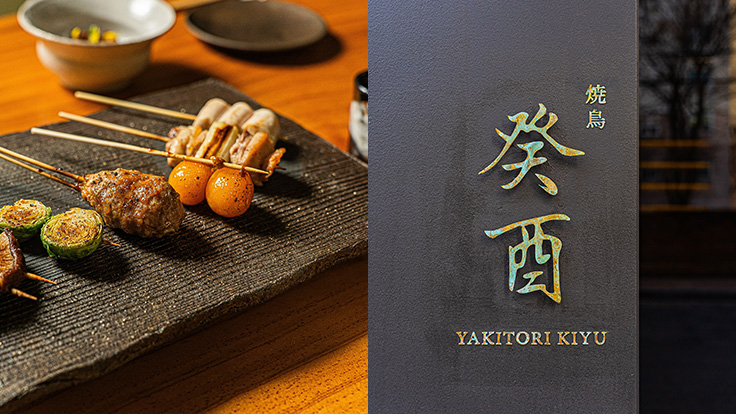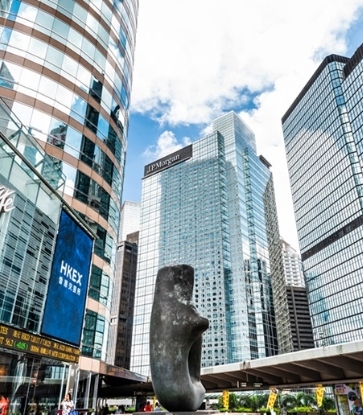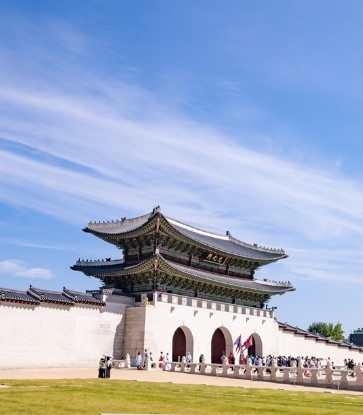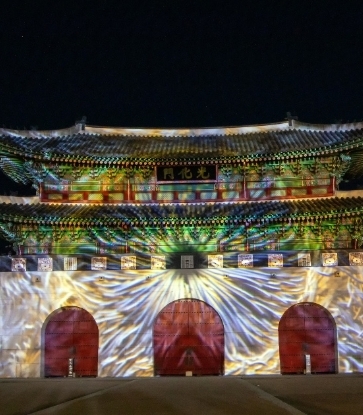Shortly after the launch of the 2024 edition, our inspectors have been back on the road again in search for new addresses worthy of inclusion in the MICHELIN Guide selection.
While the MICHELIN Guide distinctions — Stars, Bib Gourmands, and Green Stars — are revealed during the annual launch ceremony, our MICHELIN Guide inspectors have decided to share some fresh new restaurants that have caught their eyes (and palates) in the meantime, making them new additions to the next MICHELIN Guide Seoul selection.
The new restaurants that will be part of the upcoming MICHELIN Guide Seoul will be featured in both the MICHELIN Guide website and the global MICHELIN Guide mobile application.
How to identify the new restaurants? They will be highlighted with a "New" symbol. Some of these newly recommended establishments will go on to earn distinctions at the MICHELIN Star Revelation ceremony, so check them out and add them to your list of places to dine at!
Here are eight of the MICHELIN inspectors' favorite new additions for May 2024 in Seoul!
August 2024
Discover a diverse culinary journey through Seoul's finest eateries, from vegan Chinese delights to artisanal gomtang, yakitori, and authentic Thai cuisine. Each venue offers a unique taste experience, celebrating quality ingredients and masterful preparation.

RMW Carne
RMW Carne, which is located on the second floor of a renovated old house, isn’t particularly spacious, but you can enjoy your food in a comfortably petite, cozy venue. The restaurant which is named after the first letters of steak doneness - rare, medium, and well-done - dry ages various cuts of beef of a variety of different cattle breeds. Salami, chorizo, pastrami, sausages and other charcuterie, all cured in-house, are available for purchase at the store inside the restaurant. They also serve simpler dishes like grilled vegetables and pasta that can be enjoyed as a light meal or refreshment.

Gomtang Lab
True to its name, Gomtang Lab is dedicated to studying gomtang (beef bone soup) and developing diverse new recipes. Chef Yim Jung-sik has relentlessly pursued this culinary journey since the days when he helmed Pyeonghwaok. His signature dish is collagen beef bone soup, made by simmering beef leg bones, tendons, feet and oxtail for more than 10 hours until thick. Once you finish the bowl brimming with chewy, tender meat and savory broth that make a perfect meal, you’ll find your lips sticky with gelatinous collagen. To cater to different tastes, the menu offers several variations of gomtang, including a clear, meat-only version and a spicy version with added beef tripe. One last note: The signature soup is limited to only 20 bowls per day, so be sure to visit when the eatery opens.

Kirameki
Kirameki is a Japanese restaurant that serves a tasting menu centered on rice. I expected rice to be the primary focus of the meal, but after experiencing the meal, I learned that it consisted of a wide array of dishes. The menu is designed around the Japanese washoku, and showcases kaiseki cuisine prepared with seasonal ingredients. Once the ceramic pot rice is served, small morsels of food were served over scoops of aromatic white rice. Each savory bite lingered pleasantly on the palate.

Neungdong Minari
The gomtang at Neungdong Minari is topped with a pile of minari so tall that at a glance, it doesn’t look like a tang at all. The clear, clean broth is made from fresh hanwoo beef that was slaughtered on the day, which is topped with piquant minari that was grown in clear freshwater for added freshness. You should expect a wait, but you will think it is well worth it once you take your first bite.

Manao
Enter Manao, and you will be greeted with exotic vibes bolstered by seek décor and an array of art objects brought directly from Thailand. Its prix-fixe menus consist of multiple dishes in small portions, allowing guests to enjoy a variety of plates in one meal. The kitchen does an excellent job of presenting authentic Thai cuisine with its characteristic spiciness. Another appeal of this spot is that the meat and seafood are grilled to order over charcoal. Manao means “lime” in Thai, and its fare is as refreshing as its name.

ALT.a
This is a Korean-Chinese restaurant that uses all plant-based ingredients including plant-based alternative meats. That’s right. It’s a vegan Chinese restaurant. Chinese food made without any meat piqued my curiosity. They create incredible flavors that are sure to entice even diners who aren’t familiar with vegan food. The food is also low-fat so it’s easy on the stomach. They serve vegan jjamppong and fried dishes like tangsuyuk and yurinyuk that are so delightfully bouncy and chewy that no one will notice that they aren’t made from real meat. It is both a great vegan and a great Chinese restaurant.

Yakitori Kiyu
The chefs’ busy hands deftly grill the chicken as the enticing aroma of Korean tojongdak chicken yakitori fills the entire space. The experienced chefs who grill each cut of tojongdak to perfection add extra charm to each dish. The restaurant uses chickens that are naturally raised on various medicinal herbs so diners can experience healthy, quality cuts of chicken. The menu features unlaid chicken eggs, or chochin, (which means lantern in Japanese), that can only be obtained when an egg-laying hen is slaughtered, highlighting the freshness of the ingredients. Kiyu, run by chefs Woo Jin-myeong and Jeon Ju-hwan, whose goal is to study the attributes of tojongdak to take the flavors of yakitori to the next level, is the place to enjoy delicious yakitori.

Okdol Hyeonok
Taste the deeply savory broth and the nutty flavor of the noodles made from 100% buckwheat that intensifies the more you chew at Okdol Hyeonok. The restaurant is fairly new, but it has gained a solid following among Pyongyang naengmyeon connoisseurs. Some of their most popular dishes are mandu with a nuttiness that comes from plenty of tofu in the filling, eobok jaengban, and gajami shikhye. You can also have your favorite wine with your meal for a corkage fee. Enjoy the mild flavors with incredible depth.
May 2024
This May, our inspectors introduce a collection of new restaurants that promise to delight your senses. Unveiling the hidden culinary gems of Seoul, newly-included establishments showcase establishments that blend international cuisines with local Korean ingredients, some with a seasonal twist. Highlights range from a restaurant that masterfully fuses traditional Japanese cuisine with modern techniques, to one that brings innovative flair to Mexican culinary traditions, and another that uniquely combines the flavors of ramen and French cuisine from Fukuoka —and more.

Escondido
Escondido is a space replete with Chef Jin Woo-bum’s passion for Mexican food. His infatuation with the cuisine led him to Mexico, where he steadily learned and improved his culinary skills while engrossed in Mexican culture. The restaurant offers bona fide Mexican cuisine with the chef’s unique twists. He conjures up finely nuanced flavors by making particularly nuanced use of tortilla and mole, the staples of Mexican cuisine. One last tip: pairing your dish with tequila, mezcal or a cocktail will take your gourmet experience at Escondido to a whole new level.

Gaggen
Gaggen is a portmanteau of the Chinese characters ”雅” (a) and “元” (won) pronounced Japanese-style (ga, gen). Each character is a syllable from the names of the chef couple Choi Hyun-a and Won Jin-hui, who received culinary training in Japan at the noted Tokyo restaurants Kanda and Kurogi, respectively. Seasonality, a core characteristic of Japanese cuisine, is what clearly defines Gaggen’s menu. Rare gems, including Kurogi-style somen noodles, aromatic dishes featuring freshly roasted and ground sesame seeds, and warabi mochi made with bracken starch, are a treat to the senses. Accompanied by detailed informative explanations by the chefs and their hospitality, dining here is a pure delight.

Mipildam
Tucked in a quiet yet youthfully vibrant alley in Hapjeong-dong, Mipildam is an unpretentious little spot specializing in handmade mandutguk (dumpling soup) in northern Korean style. The recipe for this lightly flavored dish is based on the home recipe of the young owner couple’s grandmother, who was born and raised in Hwanghae Province, now in North Korea. The perfect combination of plump dumplings packed with juicy filling and the broth infused with subtle flavors (and without any additional artificial flavors) is not something a diner can easily resist. In addition to the signature soup, the menu offers seasonally updated traditional dishes that reflect the couple’s passion for serving good food. The seating layout accommodates solo diners as well as couples and friend groups.

Myeon Seoul
Myeon Seoul is Chef Kim Do-yun’s second restaurant following the success of his Yun Seoul. The inspiration came from a stream of customer requests at the original spot for a separate offering of its housemade noodles, which are made exclusively with whole wheat, mung bean, dried pollack, and without chemical additives. For a perfect flavor composition, the chef blends whole wheat varieties sourced from Korea, France and Turkey. Highlights include perilla oil noodles imbued with fresh, nutty flavors; spicy noodles glazed with a piquant sauce; and bracken whole wheat noodles flavored with bracken and perilla seeds. Also recommended is a pairing of traditional Korean alcohol sold as an accompaniment.

Nishimuramen
Nishimuramen, a famed restaurant in Fukuoka known for its unique marriage of Japanese ramen and French cooking, has finally opened its doors in Seoul. The culinary offspring of Chef Takahito Nishimura born out of his unparalleled enthusiasm for ramen, this noodle joint flaunts his distinctive style by bringing out the rich, multifaceted flavors of ramen through an intriguing union of toppings, sauces and oils. While maintaining the authenticity of ramen, the kitchen has successfully localized its fare, for instance, by using laver oil, Cheongyang chili pepper, and tsukemono (Japanese pickles) in the style of white kimchi. Freshly cooked pot rice mixed with cheese and ramen broth (like risotto) is another standout dish that asserts this eatery’s unique role in the gastronomic universe.

Rialto
Over the past few years, a streamlined selection of antipasti, paired with a focus on primi dishes, has been an overarching trend across Seoul’s Italian dining landscape. In line with the trend, this fine diner offers a simple menu while remaining true to its northern Italian roots, as highlighted by the name “Rialto,” and to the chef’s unique culinary philosophy, sensibilities and style. Winning dishes include tajarin and cacio e pepe, deeply flavored with a beguiling harmony of butter and cheese. The kitchen’s other pastas flaunt an equally excellent balance of sauce flavors. Pickled ponytail radish is yet another standout that evokes the endearing flavors of our memories.

Sanro
Chef Yoo Sung-yup’s culinary mastery and dedication to washoku, or traditional Japanese cuisine, shine through at Sanro. The entrance greets diners with a hanging scroll that reads “三露,” the name of this spot that expresses the Japanese practice of sprinkling the entrance with water three times after welcoming customers into an establishment. The nuanced and chic objets d’art adorning every corner are in sync with the vibes and sensibilities the chef seeks to convey through his menu and dining space. When refreshing seasonal ingredients meet his ardor for culinary art and sophisticated skills, what’s born is a smorgasbord of subtle flavors that invariably soothes the palate throughout the meal. To top it off, the service here is as impeccable as the clean and refined flavors of the chef’s washoku cuisine.

Sool052
Sool052 is a portmanteau of “sool” (alcohol) and “052,” the area code of the region the chefs live in. It’s a Korean gastropub brimming with culinary ideas as playful as the restaurant’s name. Employing diverse fermented pastes and fermentation techniques, the basis of most Korean cuisine, the chef duo offers unique dishes that are household names yet prepared with exceptional care and attention to detail to draw out unforgettable flavors. On top of this, the varied menu selections tend to go well together, making it easy to enjoy multiple items at once. These allures make Sool052 a perfect place to experience the exquisite harmony between Korean food and Korean alcohol.





















